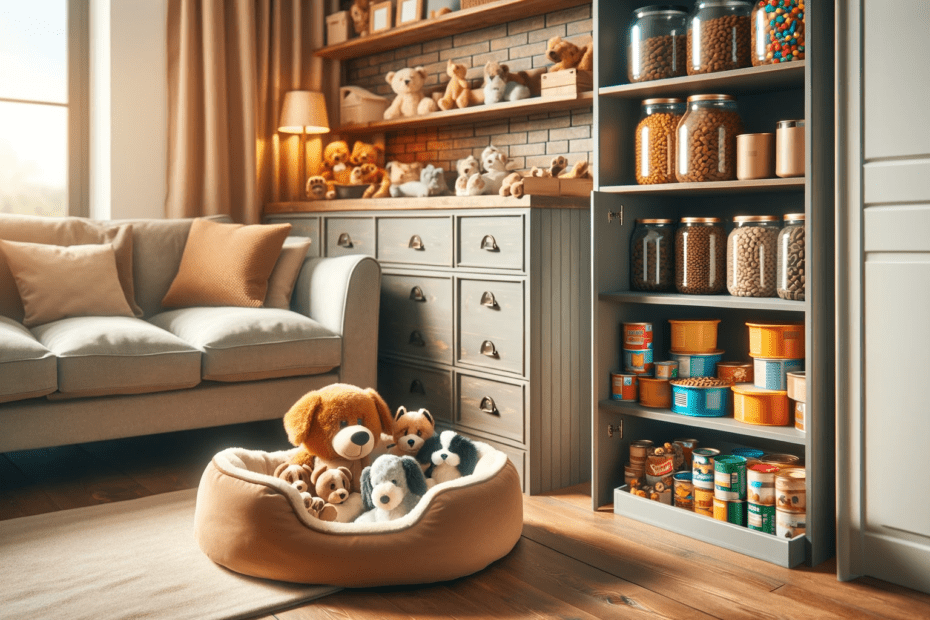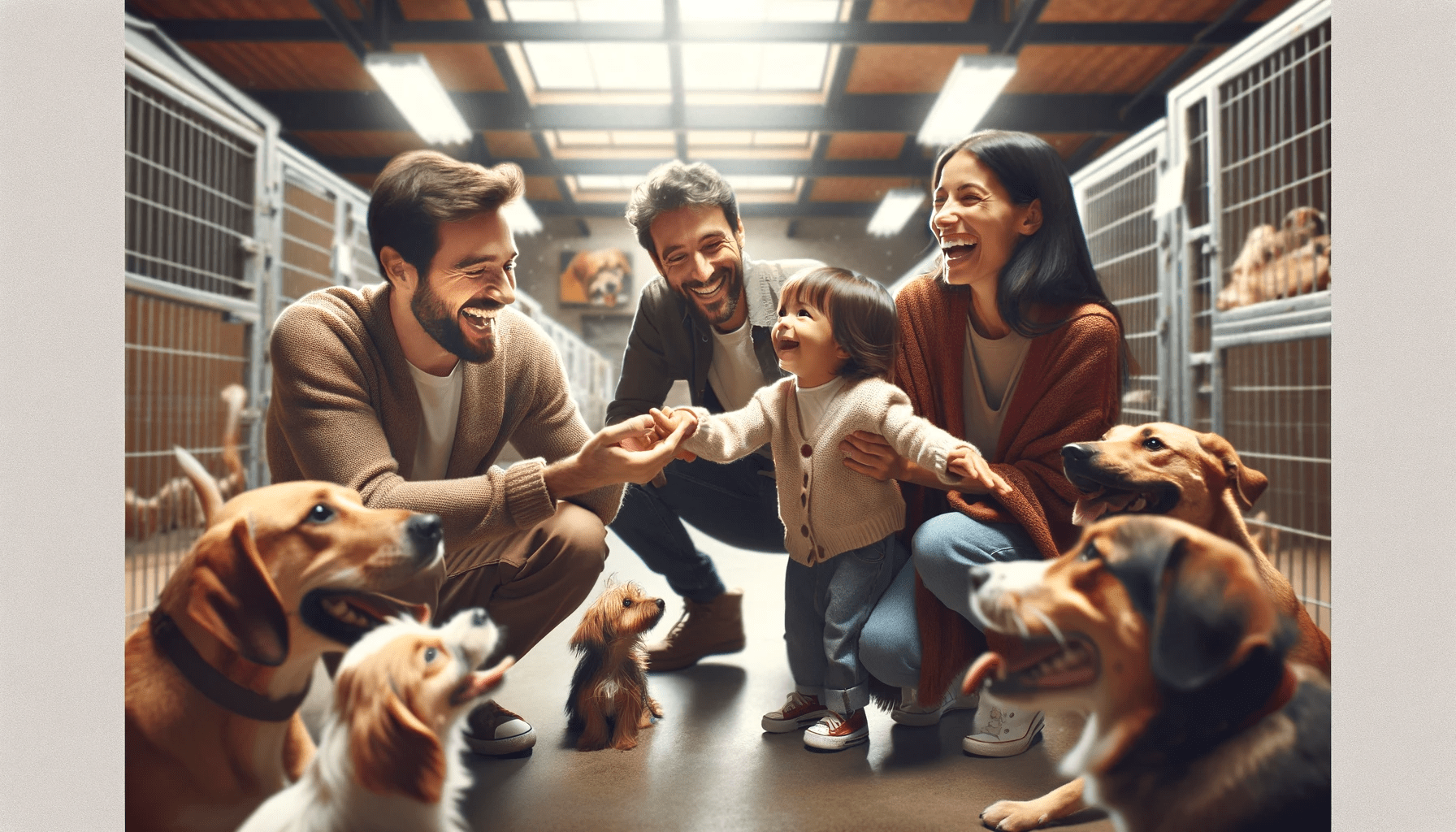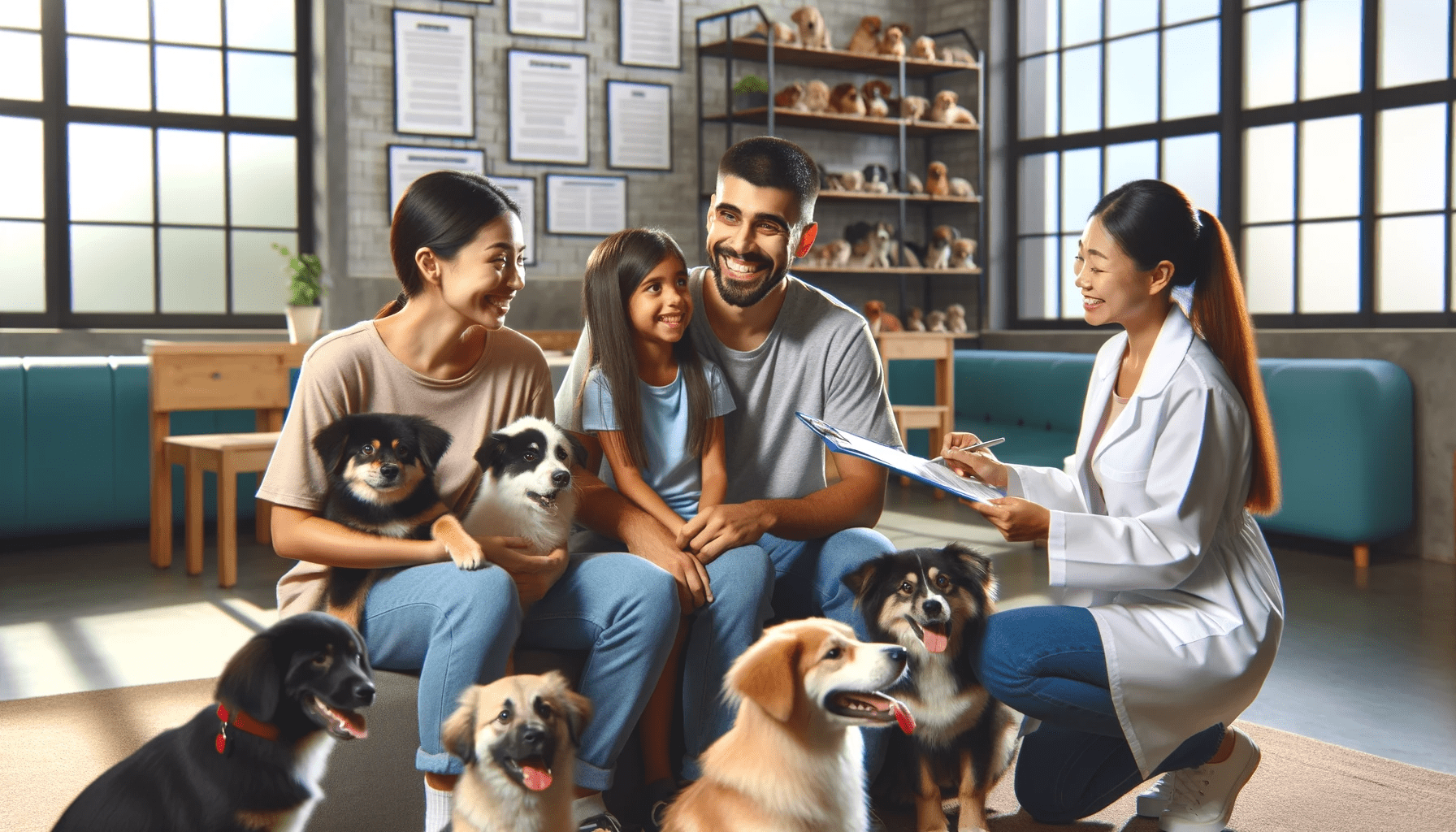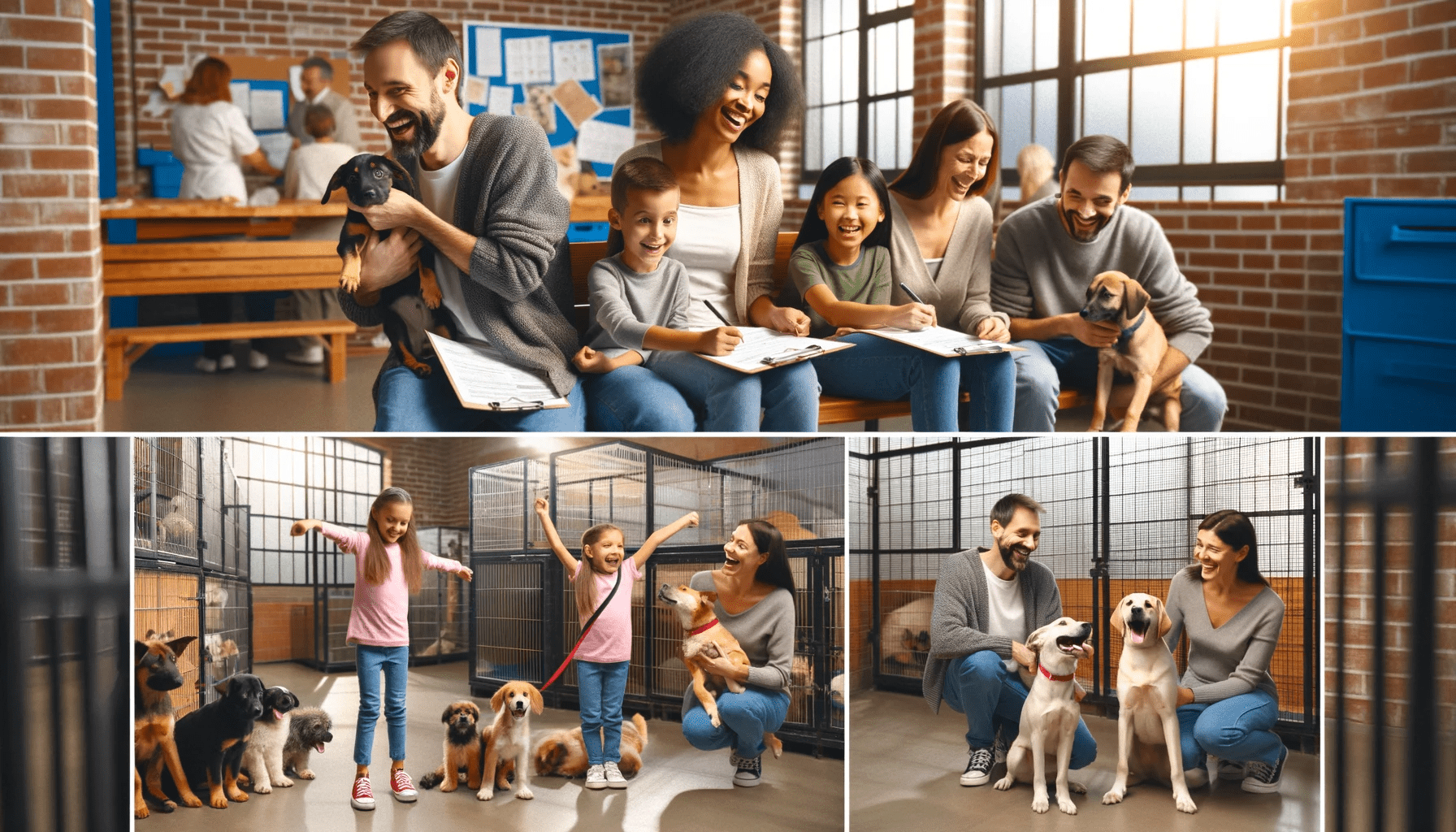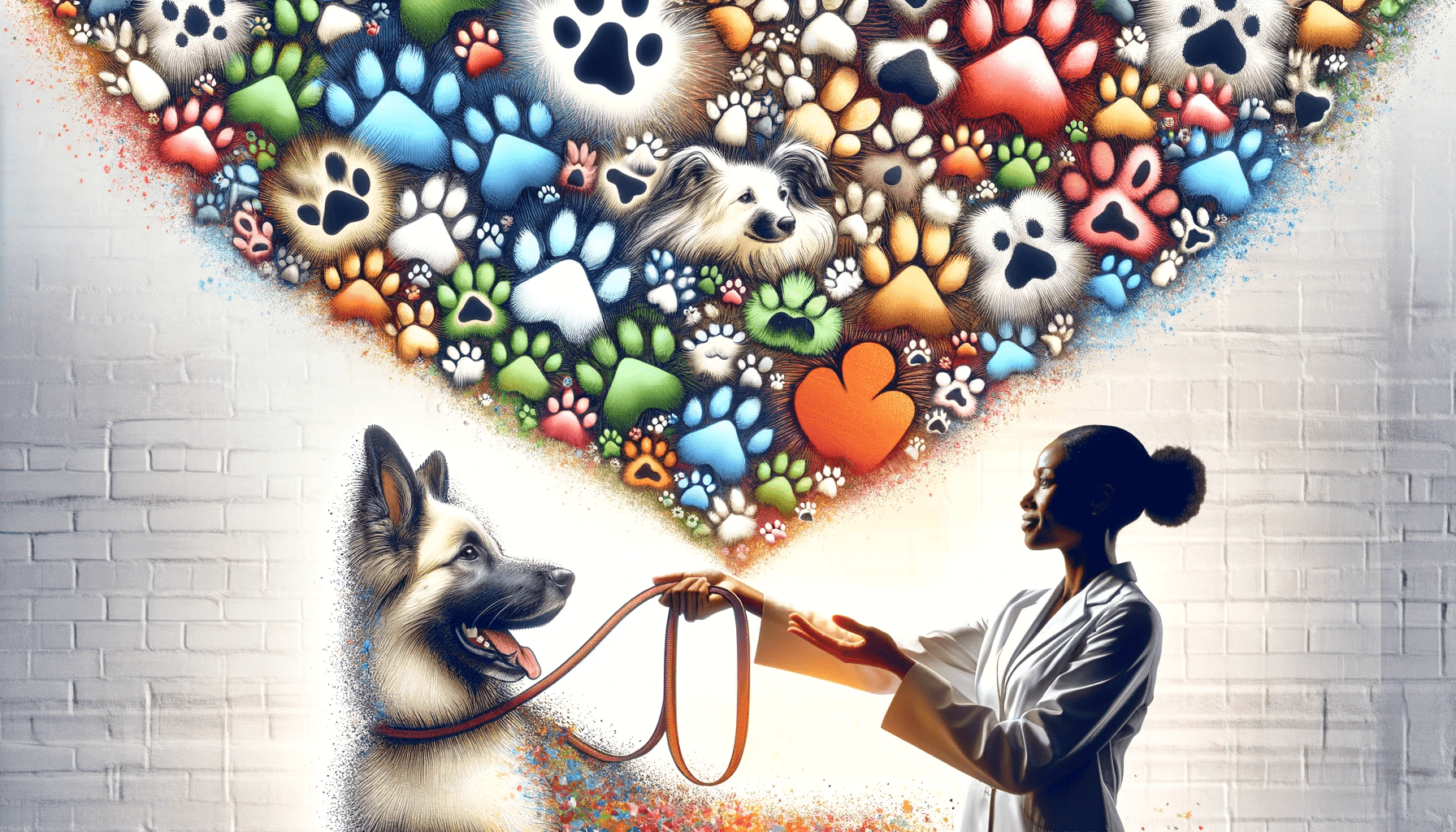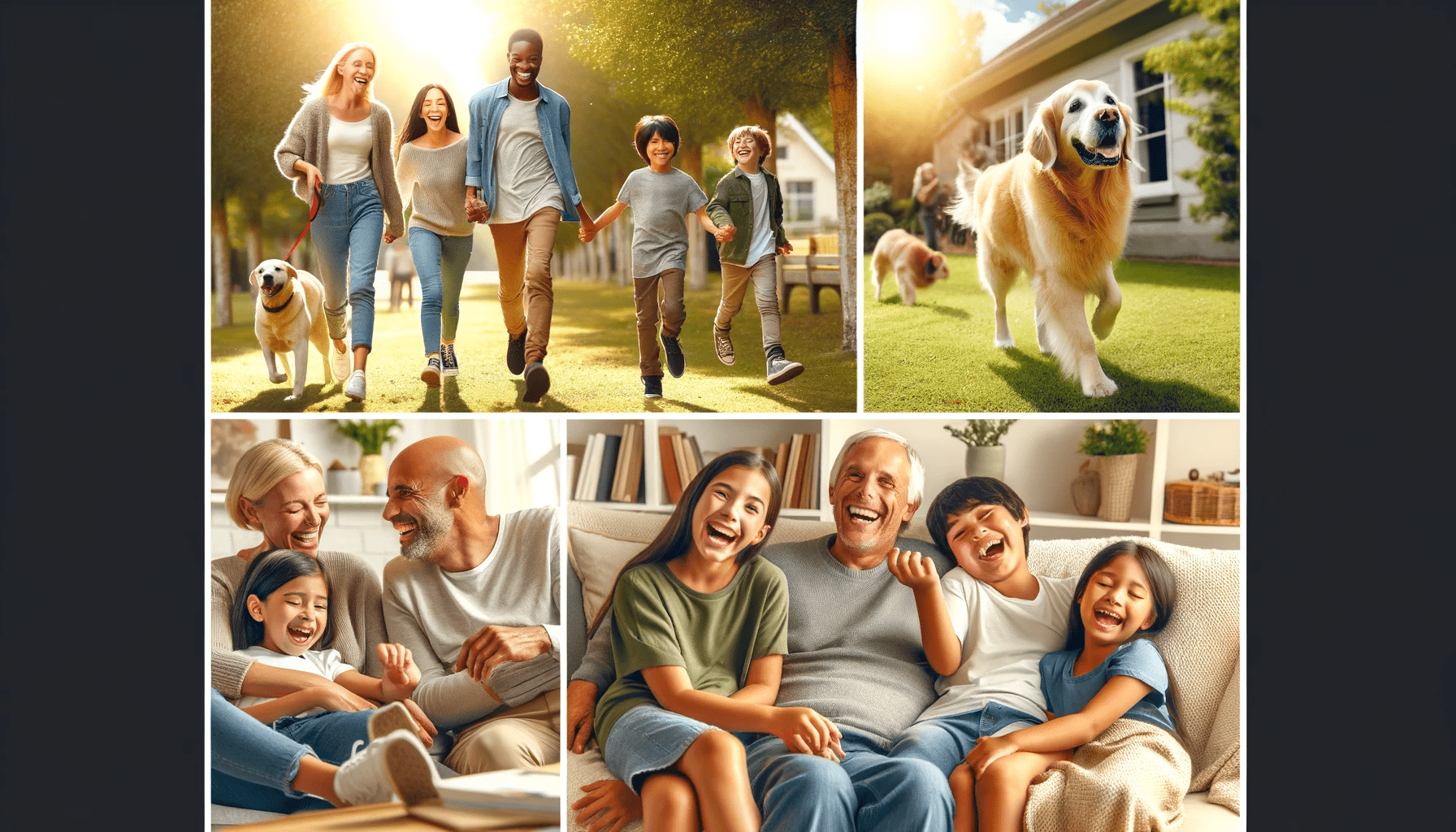Are you considering adopting a dog?
Before bringing your new furry friend home, it's essential to prepare your space. Dog adoption requires home preparation to ensure a safe and comfortable environment for your new companion. By assessing your home, puppy-proofing, creating a designated dog area, and gathering essential supplies, you can set the stage for a successful adoption.
Establishing house rules, securing your backyard, and being prepared for potential health concerns are also crucial steps. Seek professional training assistance to ensure a smooth transition for both you and your new canine companion.
Key Takeaways
- Evaluating the suitability of your home for dog adoption is important to ensure the dog has enough space to move around comfortably.
- Identifying and addressing potential dangers and hazards in your home is crucial for creating a safe environment for the dog.
- Taking essential safety measures such as securing hazardous items, removing small objects, and covering electrical cords can prevent accidents and injuries.
- Creating a dog-friendly environment with designated spaces, outdoor play areas, and proper supplies contributes to the dog's well-being and happiness.
Assessing Your Home Environment
Assess the suitability of your home environment for dog adoption. Before bringing a furry friend into your life, it's essential to evaluate your home's layout and identify potential dangers. Start by considering the space available. Dogs, especially larger breeds, need room to move around comfortably. Assess whether your home has enough space for them to play, exercise, and relax. Take note of any small or cramped areas that may cause discomfort or restrict their movements.
While assessing your home, it's crucial to identify potential dangers. Look for any hazardous or toxic substances that could harm your new canine companion. Ensure that cleaning supplies, chemicals, and medications are stored securely out of their reach. Additionally, be aware of any sharp objects, electrical cords, or low-hanging decorations that could pose a risk to their safety.
Evaluate the accessibility of your home as well. Are there any stairs or obstacles that might make it difficult for a dog to navigate? Consider whether there are any areas of the house that should be off-limits, such as rooms with valuable items or fragile objects.
Puppy-Proofing Your Living Space
Before bringing home your new puppy, it's important to puppy-proof your living space to ensure their safety.
Take essential safety measures such as securing loose wires, blocking off stairs, and removing toxic plants.
Address potential hazards like small objects that can be swallowed or sharp objects that can cause injury.
Create a dog-friendly environment by providing designated spaces for their toys, food, and water, and ensuring a comfortable and secure area for them to rest.
Essential Safety Measures
To ensure the safety of your new furry friend, it's important that you take essential safety measures by puppy-proofing your living space. Assessing safety and conducting a thorough home environment evaluation are key steps in creating a safe and secure environment for your new dog.
Here are some essential safety measures to consider:
- Secure hazardous items: Keep cleaning supplies, medications, and other toxic substances out of reach or locked away.
- Remove small objects: Puppies are curious and may swallow small objects, so be sure to pick up any small items that could be a choking hazard.
- Cover electrical cords: Puppies love to chew, so cover electrical cords or hide them behind furniture to prevent electrocution.
- Install baby gates: Use baby gates to block off areas that are off-limits to your puppy, such as stairs or rooms with fragile items.
Potential Hazards to Address
Ensure your living space is safe for your new dog by addressing potential hazards. Puppy-proofing your home is crucial to prevent accidents and protect your furry friend.
Start by identifying any potential hazards such as toxic plants, cleaning products, and medications that should be kept out of reach. Secure loose cords and wires to prevent your dog from chewing on them and getting electrocuted. Block off access to areas that may contain dangerous objects or substances. Install baby gates to restrict access to stairs or rooms that are off-limits.
Ensure that all windows and balconies are securely screened to prevent falls. Keep small objects, such as coins or small toys, out of your dog's reach as these can pose a choking hazard.
Taking these home safety measures will help create a safe environment for your new dog and give you peace of mind.
Creating a Dog-Friendly Environment
Once you have addressed potential hazards, it's time to create a dog-friendly environment in your living space. Here are some tips to help you make your home a safe and enjoyable place for your new furry friend:
- Dog-Friendly Furniture: Invest in furniture that's dog-friendly, such as stain-resistant fabrics or leather that can be easily wiped clean. Look for furniture with removable and washable covers to make cleaning up those inevitable accidents a breeze.
- Outdoor Play Area: Dogs need exercise and outdoor stimulation. Create a designated outdoor play area where your dog can run, play, and explore safely. Install a secure fence or gate to prevent them from wandering off and provide shade and water for hot days. Make sure the area is free from toxic plants or substances that could harm your dog.
Creating a Designated Dog Area
Designate a specific area in your home for your new dog to create a comfortable and secure space. Having a designated dog area is crucial for their well-being and your peace of mind. This area can serve as both a designated play area and a potty training area.
When choosing a location for your dog's area, consider a quiet and low-traffic area of your home. This will help your dog feel safe and calm. It's also important to ensure that the area is easily accessible to you, so you can supervise and interact with your furry friend.
Create a cozy spot by providing a comfortable bed or crate, along with some toys for mental stimulation. This will give your dog a sense of security and a space to call their own. Additionally, you can use baby gates or playpens to establish boundaries and prevent your dog from accessing areas where they may get into trouble.
In terms of potty training, designate a specific spot within the area for your dog to relieve themselves. Use puppy pads or artificial grass to create a dedicated potty area. Be consistent with taking your dog to this spot and praise them when they use it correctly.
Gathering Essential Supplies
To properly prepare for dog adoption, it's important to gather all the essential supplies you'll need. Bringing a new furry friend into your home is an exciting time, but it also requires careful planning and preparation. Here are the essential supplies you should consider:
- Food and Water Bowls: Choose sturdy bowls that are easy to clean and won't tip over easily. Stainless steel or ceramic options are recommended.
- Collar and Leash: A collar with ID tags and a sturdy leash are essential for walks and outings. Make sure the collar fits properly and is comfortable for your new companion.
- Bed or Crate: Providing a comfortable space for your dog to rest is crucial. Whether you choose a dog bed or crate, make sure it's the right size for your furry friend to sleep and relax in.
- Toys and Chews: Dogs need mental and physical stimulation. Stock up on toys and chews to keep your new pet entertained and engaged.
- Grooming Supplies: Regular grooming is important for your dog's health and hygiene. Purchase brushes, nail clippers, and shampoo suitable for your dog's breed and size.
Establishing House Rules and Routines
To maintain a harmonious household, it's important to establish clear house rules and routines for your new canine companion. Establishing routines helps your dog understand what's expected of them and provides them with a sense of structure and security. When it comes to training techniques, consistency is key. Make sure everyone in the household is on the same page and follows the same set of rules. This will prevent confusion for your dog and ensure that they receive consistent messages.
Start by setting boundaries. Determine which areas of the house are off-limits for your dog and establish rules regarding furniture. Decide if your dog will be allowed on the couch or bed, and stick to that decision. Consistency is crucial in establishing these boundaries.
Next, create a routine for feeding, exercise, and potty breaks. Dogs thrive on routine, and having a set schedule will help them feel secure and reduce the likelihood of accidents or destructive behavior. Set specific times for meals, walks, and bathroom breaks, and stick to them as closely as possible.
Lastly, establish rules for behavior and obedience. Decide what behaviors are acceptable and what're not, and be consistent in enforcing these rules. Use positive reinforcement techniques, such as praise and treats, to reward good behavior and redirect inappropriate behavior.
Ensuring a Safe and Secure Backyard
To maintain a harmonious household and continue establishing house rules and routines, it's crucial to ensure that your backyard is safe and secure for your new dog. Creating a dog-friendly environment outdoors not only provides a safe space for your furry friend to roam and play but also promotes their overall well-being.
Here are some key steps to ensure a safe and secure backyard for your new dog:
- Install a secure fence: A sturdy fence is essential to prevent your dog from wandering off and keep them safe within the boundaries of your property. Make sure the fence is tall enough to discourage jumping or climbing.
- Remove potential hazards: Take a thorough look at your backyard and remove any potential hazards such as toxic plants, sharp objects, or chemicals that could harm your dog. Keep garbage cans securely closed to prevent scavenging.
- Create a designated potty area: Establish a specific area in your backyard for your dog to relieve themselves. This will aid in their dog training and help prevent accidents elsewhere in the yard.
- Consider leash training: Even with a secure backyard, it's important to leash train your dog to ensure their safety when outside the confines of your property. This will also make walks and outings more enjoyable for both of you.
Preparing for Potential Health Concerns
When preparing for potential health concerns before adopting a dog, it's crucial to schedule veterinary check-ups and ensure that all necessary vaccinations are up to date. Regular visits to the vet will help detect any underlying health issues and provide necessary treatments.
Additionally, creating a safe environment at home by removing toxic plants, securing hazardous items, and keeping medications out of reach will help prevent accidents and keep your new furry friend healthy and happy.
Veterinary Check-Ups and Vaccinations
Schedule a veterinary check-up and ensure your new dog receives all necessary vaccinations to address potential health concerns. Taking your dog to the vet is an important step in providing the best possible care for your furry friend.
Here are some reasons why veterinary care and preventive measures are crucial for your new dog:
- Regular check-ups: Regular visits to the vet allow for early detection of any health issues and ensure that your dog receives the necessary treatments.
- Vaccinations: Vaccinations protect your dog against various diseases, such as rabies, distemper, and parvovirus. They boost their immune system and help prevent the spread of contagious diseases.
Creating a Safe Environment
Ensure your home is free from potential health hazards by dog-proofing it before bringing your new furry friend home. Creating a safe environment is crucial for the health and well-being of your newly adopted dog.
Start by securing any toxic substances such as cleaning products, medications, and plants that could harm your pet if ingested. Keep electrical cords out of reach to prevent chewing accidents and potential electric shocks. Store small objects, including children's toys and small household items, in closed cabinets to avoid choking hazards.
Make sure your yard is secure and free from any harmful plants or chemicals. Additionally, establish a designated area for your dog's food and water bowls, bedding, and toys to provide a sense of familiarity and comfort.
Seeking Professional Training Assistance
To successfully prepare your home for dog adoption, consider seeking professional training assistance on a regular basis. Professional trainers have the expertise and experience to guide you through the process of training your new furry friend. Here are some reasons why professional training assistance is crucial for a smooth transition:
- Expert guidance: Professional trainers can assess your home and provide valuable insights on creating a safe and secure environment for your new dog. They can help you identify potential hazards and suggest necessary modifications to ensure your home is dog-friendly.
- Behavioral training: Adopting a dog comes with its own set of challenges, especially if the dog has experienced trauma or has behavioral issues. Professional trainers can help address these concerns effectively by providing specialized training and behavior modification techniques.
Seeking professional training assistance not only helps you create a safe and welcoming environment for your new dog but also ensures that you have the knowledge and skills to handle any behavioral challenges that may arise.
Frequently Asked Questions
What Are the First Steps to Take When Assessing Your Home Environment for Dog Adoption?
Assessing your home environment is crucial for dog adoption. Start by considering the space available, ensuring it's safe and secure. Think about dog-friendly furniture, such as chew-proof beds or crates. It's essential to create a comfortable and safe space for your new furry friend.
How Can I Effectively Puppy-Proof My Living Space to Ensure the Safety of a New Dog?
To effectively puppy-proof your living space and ensure the safety of a new dog, there are a few key tips to keep in mind. Be aware of common household dangers and take proactive measures to prevent accidents.
What Are Some Important Factors to Consider When Creating a Designated Dog Area in My Home?
When creating a safe space for your dog, consider their needs and preferences. Provide comfortable bedding, access to water and food, and toys for mental stimulation. Ensure the area is secure and free from hazards.
What Essential Supplies Should I Gather Before Bringing a New Dog Home?
Before bringing a new dog home, gather essential supplies like food, bowls, leash, collar, and a comfortable bed. Create a safe living space by securing hazardous items, setting boundaries, and providing toys for mental stimulation.
How Can I Establish House Rules and Routines to Help With the Dog's Transition?
To establish routines and manage behavioral expectations during your dog's transition, start by setting clear house rules. Consistency is key; use positive reinforcement to reward desired behaviors and redirect or correct unwanted ones.
Conclusion
In conclusion, preparing your home for a new dog is crucial for a smooth and successful adoption.
By assessing your home environment, puppy-proofing your living space, and creating a designated dog area, you can ensure a safe and comfortable space for your furry friend.
Gathering essential supplies, establishing house rules and routines, and ensuring a secure backyard are also important steps.
Lastly, don't hesitate to seek professional training assistance and prepare for potential health concerns to provide the best possible care for your new companion.
